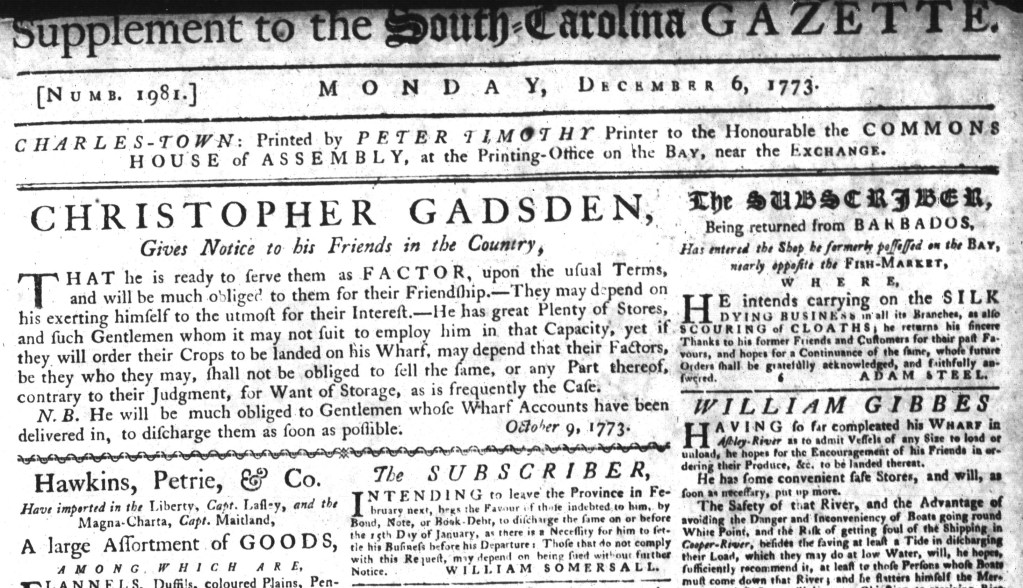What was advertised in a colonial American newspaper 250 years ago today?

“CHRISTOPHER GADSDEN, Gives Notice to his Friends … THAT he is ready to serve them as FACTOR.”
In the fall of 1773, Christopher Gadsden took to the pages of newspapers published in Charleston to offer his services “as FACTOR, upon the usual Terms,” to plantation owners who raised rice, indigo, and other crops “in the Country.” For those who did not wish to employ him as an agent buying and selling commodities on their behalf, he also rented space in a “great Plenty of Stores” or warehouses “on his Wharf.”
The copy in Gadsden’s advertisement read much the same as the notices placed by his competitors. The format, however, distinguished his advertisement from the dozens of others placed for many different purposes. At least that was the case in the South-Carolina Gazette. In that newspaper, Gadsden’s advertisement extended across two columns. His name served as a headline, the size of the font rivaling the title of the newspaper in the masthead. The rest of the copy appeared in larger font than other notices, also demanding the attention of readers.

That differed from Gadsden’s advertisement in the South-Carolina Gazette and Country Journal. Featuring identical copy, it had a much different format. His name once again served as a headline, but in a font the same size used for headlines of other advertisements. Most significantly, the compositor confined that advertisement to a single column, one more notice among the many that ran in that newspaper.
Compositors usually made decisions about the format of advertisements after advertisers submitted copy to printing offices. In this instance, however, the extraordinary format for Gadsden’s advertisement in the South-Carolina Gazettesuggests that he successfully negotiated for some sort of design to set his notice apart from others. Did he envision an advertisement spanning two columns? Or did the compositor make that decision after learning that Gadsden wanted something different? Did Gadsden make a similar request for his advertisement in the South-Carolina Gazette and Country Journal, only to have it rejected? Some printers and compositors seemed more amenable to instructions from advertisers than others. In Boston, for instance, decorative borders enclosed Jolley Allen’s notices in every newspaper except the Massachusetts Spy. Isaiah Thomas, the printer, presumably rejected Allen’s trademark format. Similarly, Gadsden may have had more luck working with Peter Timothy and the South-Carolina Gazette than with Charles Crouch and the South-Carolina Gazette and Country Journal.
